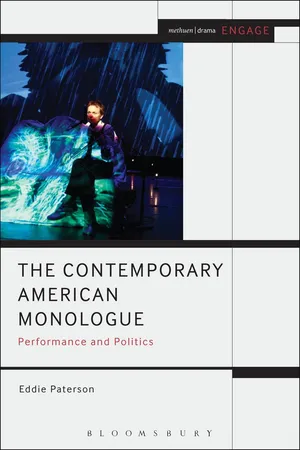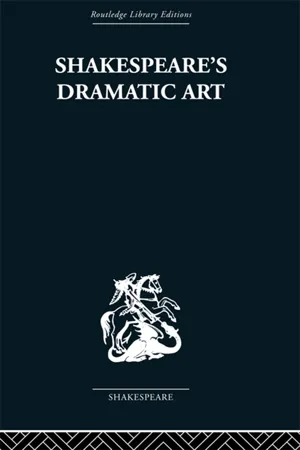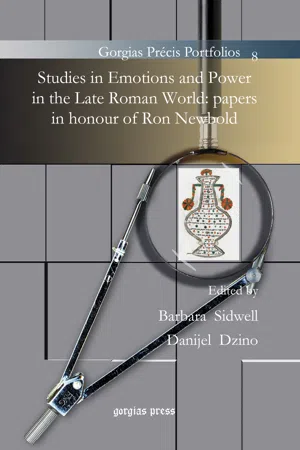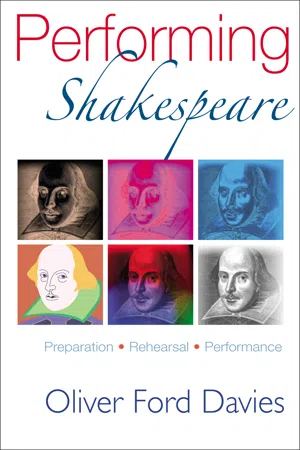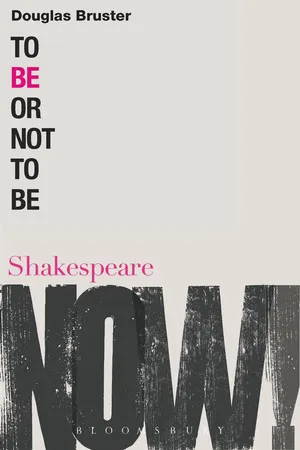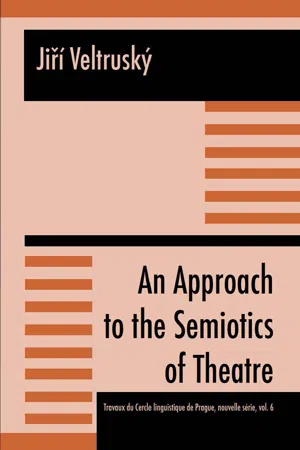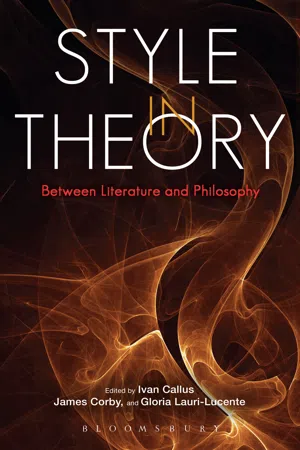Literature
Soliloquy
A soliloquy is a literary device in which a character speaks their thoughts aloud, usually when they are alone on stage. It provides insight into the character's inner thoughts and emotions, allowing the audience to understand their motivations and conflicts. Soliloquies are commonly used in plays and dramatic literature to reveal the complexities of a character's psyche.
Written by Perlego with AI-assistance
9 Key excerpts on "Soliloquy"
- eBook - PDF
The Contemporary American Monologue
Performance and Politics
- Eddie Paterson, Enoch Brater, Mark Taylor-Batty, Enoch Brater, Mark Taylor-Batty(Authors)
- 2015(Publication Date)
- Methuen Drama(Publisher)
Soliloquy and selfhood The Soliloquy is chief subcategory of the monologue and the form most connected to the writings of William Shakespeare in the Elizabethan The Contemporary American Monologue 18 period. It is a type of monologue that is commonly associated with introspection and meditation. The term, said to be coined by St Augustine, comes from the Latin soliloquium and literally means ‘a talking to oneself’. It is broadly defined for drama as ‘a locution dominating the stage and the attention of the theatre audience, delivered by a speaker who is alone onstage’. 13 The most celebrated aspect of the device is that soliloquies are directed inwards , towards the speaking self and the audience rather than outwards to another character, and are theorized as being expressions of interior thoughts, feelings, revelations or decisions. 14 This focus on inward-directed speech frequently results in monologues with a similar type of focus being labelled soliloquies, even if the actor speaking is not technically alone onstage. However, as Wolfgang Clemen argues, the sheer diversity and scope of Shakespeare’s innovations to monologue points to the heterogenenous sources from which he drew. Indeed, the use of rhetoric, colloquial speech and allegorical representation (all techniques associated with Shakespeare) can also be found in earlier forms of drama and performance such as Senecan tragedy, the mystery and morality plays of the medieval period, and the popularity of comedic spectacles, pageants and masques. For Clemen, Shakespeare was not only a creative genius, but an ‘inspired borrower’ who was able to shape the established tradition of the Soliloquy in new ways. 15 For Lloyd A. Skiffington, the Shakespearian Soliloquy contains three often-overlapping features that, although originally based in earlier manifestations of monologue, come to be creatively exploited in Shakespeare’s writing. - eBook - PDF
Reading Shakespeare's Soliloquies
Text, Theatre, Film
- Neil Corcoran(Author)
- 2018(Publication Date)
- The Arden Shakespeare(Publisher)
At one point in Emma (1815) the word ‘Soliloquy’ is used to describe the heroine’s empathetic imagining of the unease of her close friend Mrs Weston: ‘“My dear, dear, anxious friend,” – said she, in mental Soliloquy’ (Book II, ch. V). In Mansfield Park (1814), a novel that imaginatively represents a debate between the conflicting ethics of the novel and of drama, Fanny Price’s reflections after receiving a vitally significant letter from Edmund, the man she loves, are defined as ‘soliloquies’ (Book III, ch. xii), and in the same novel Henry Crawford, after reading Henry VIII aloud, says that ‘Shakespeare one gets acquainted with without knowing how’, to which Edmund replies ‘we all talk Shakespeare’ (Book III, ch. iii). In Sense and Sensibility (1811) we hear that three of the main characters have been reading Hamlet aloud together and in Persuasion 60 READING SHAKESPEARE’S SOLILOQUIES (1818) characters discuss Childe Harold’s Pilgrimage . Austen’s use of the word ‘Soliloquy’ with its significant qualifier ‘mental’ in Emma suggests that she is transposing or appropriating it from its by then customary usage in relation to theatrical performance, but it may also imply that soliloquies spoken aloud on the Regency stage were well understood as the represen-tation of thought too. Subsequently, nineteenth-century poets – prominently Tennyson and Browning – invented the dramatic monologue, the most significant form introduced into the poetry of the period, largely in response to Shakespearean Soliloquy. Designed to objectify, by dramatizing, the lyric impulse at a moment when, for various reasons, verse drama itself had become virtually impossible for poets, dramatic monologue is a form in which a named character speaks at some length in a way that defines his or her personality or disposition. - A. D. Cousins, Daniel Derrin(Authors)
- 2018(Publication Date)
- Cambridge University Press(Publisher)
205 Instead of going to all that effort, some scholars, including some authors of reference books, adopt the easy method of defining ‘Soliloquy’ according to its etymology as a speech (loqui, ‘to speak’ in Latin) by a character alone on stage (solus). This procedure for describing stage practices without actually examining stage practices is nonsensical. No sane dramatist would tailor his dramatic practices so that they would conform to the etymology of a word. As one might expect, this unempirical definition-by-etymology excludes many passages that should be included in any catalogue of solilo- quies. Unaware that Romeo is present onstage in the balcony scene, Juliet speaks to herself. Aware that Juliet is present, Romeo guards speeches from her hearing that are not directed at the hearing of any other character. Kinds of Soliloquies and the Historicity of Conventions One important finding of my investigation was that, over the course of Western theatrical history, there have been three distinct kinds of passages that possess the qualifying characteristic: (1) speeches knowingly addressed by the character to playgoers; (2) self-addressed speeches (unaware of the presence of playgoers, the character talks to himself); and (3) interior monologues (the words spoken by the actor represent the unspoken thoughts of the character). When I tracked each of these kinds over the course of theatrical history, I discovered that they have not occurred with similar frequencies in every era; conventions governing soliloquies are not universal, transhistorical phenomena. 1 Evidence That Late Renaissance Soliloquies Represented Spoken Words, Not Unspoken Thought Despite a diligent search, I encountered no credible evidence that any Soliloquy in any play written before the middle of the seventeenth century was designed to represent an interior monologue or was perceived as such by playgoers.- eBook - ePub
Shakespeare's Dramatic Art
Collected Essays
- Wolfgang Clemen(Author)
- 2013(Publication Date)
- Routledge(Publisher)
Shakespeare’s supreme art of illustrating an inner process, of expressing feelings, thoughts and moods not by abstract terms but by concrete images and precise symbols, has reached its climax in these soliloquies by Macbeth. The dramatization of the Soliloquy, too, is particularly forceful here, as we not only watch with eager tension the way in which an inner conflict is made articulate through poetic vision, but we also see a development taking place each time so that the point reached at the end of the Soliloquy is different from the attitude at its outset. Macbeth is no longer describing – as if from outside — what passes in himself; we are in fact drawn into the process of his inner experience which fuses thinking, feeling, imaginative vision into one complex mood. When Brutus, during the scene we have just mentioned, says in his fourth short SoliloquyBetween the acting of a dreadful thing And the first motion, all the interim is Like a phantasma or a hideous dream,he still describes and states what in Macbeth’s Soliloquy has taken the form of a direct expression of something that happens within himself at just this moment.(II , i, 63)We would have to go to great lengths to do full justice to Shakespeare’s art of the Soliloquy as it emerges in Hamlet, Macbeth and Lear. But it is clear that we would miss half the play and fail to understand these characters if we had not their soliloquies. In these soliloquies Shakespeare has not only developed a new mode of character revelation, he has also simultaneously worked out a new form of drama which by putting the emphasis on the inner drama and on a complex dramatic representation which proceeds on several levels calls for the Soliloquy as an indispensable and subtle instrument. Each Soliloquy comes at a significant moment and it carries on developments and reveals inner moods which can be made articulate in an appropriate manner only through monologic speech.1This is not to say that all soliloquies in these plays consist of revelations of inner experience. Let us look for one moment at Hamlet’s first Soliloquy after King Claudius, with the Queen and the courtiers, has left the stage. During this scene Hamlet – though appearing for the first time in this play – has been unwilling to speak though our attention has been focused on his person all the time. When he remains alone on the stage we know that he will now open his mouth and speak without the restraint he has forced upon himself in the presence of others. But what we get in his Soliloquy ‘O that this too too solid flesh would melt’ is not a train of thought nor a consistent process of feeling but a turmoil of emotion, recollection, and violent accusation breaking out into disrupted outcries, exclamations and sudden recognitions. The agonizing scene through which he has just passed transforms itself into vivid images and concrete symbols which flash before his mind to express not only his disgust at the world as it now presents itself to him, but also his clear remembrance and his love of his father, and his poignant realization of the ‘hasty marriage’. We too, the audience, may live again through this past scene for which the Soliloquy gives us the right background so that retrospectively this scene assumes a new significance for us. The Soliloquy thus carries the tragedy to a different plane of reality and we are given new eyes, Hamlet’s eyes, to look back at what has happened and to guess at what is still hidden in the future. In Hamlet’s soliloquies Shakespeare has created a new kind of dramatic speech which by its rapid transitions, its dissolution of syntax, its extraordinary economy and its fusion of several emotions and ideas can follow the quickly changing reactions of a sensitive mind better than speech in dialogue ever could. - Barbara Sidwell, Danijel Dzino(Authors)
- 2010(Publication Date)
- Gorgias Press(Publisher)
If we must allocate it a genre definition, some progress can be made with a major modern treatment of Soliloquy in the theatre by James Hirsch. 12 He has ventured to give a survey “From Antiquity to the middle of the Sixteenth Century” (the title of his Chapter 3) — an ambitious effort which starts with Roman comedy and ends with Thomas Preston (sixteenth century). His line of investigation follows the definitions offered in his first chapter which takes “so-liloquy” to divide into audience-addressed speech, self-addressed speech, and interior monologue. 13 His scope is therefore not suit-able to our project, but his distinctions between the three types of 10 Farquharson (1944) vol. I, xv-xvi. 11 Rutherford (1989) 3, 21-24, rejecting Farquharson’ theory that the work is “a draft for a moral treatise” (23). 12 Hirsch (2003). 13 Hirsch (2003) 13. M ARCUS A URELIUS AND SOLILOQUE 45 Soliloquy could be a useful starting point for our investigation into the nature of Soliloquy and its possible uses. From a strictly formal point of view Marcus Aurelius’ writings “to himself” ( Ta eis heauton ) can be dubbed self-addressed mono-logue, but it is also quite close to interior monologue. These are not spoken words, unless we assume that he would re-read them out loud to himself. This is a possibility we cannot exclude, but since his ruminations are rather repetitive, it is far more plausible to as-sume that he used these notes as daily reflections and reminders of the moral message he was trying to adhere to. If, in the words of Brodsky, the Meditations “is at once a melancholy and repetitive book”, 14 the nature of his thoughts strike the modern reader as gloomy and depressing, but that will happen only if one tries to read it all at once — which would be ill-advised. The most striking characteristic that sets the work apart must be its lack of audience awareness: this is probably one of the most private documents surviving from antiquity.- eBook - ePub
Performing Shakespeare
Preparation, Rehearsal, Performance
- Oliver Ford Davies(Author)
- 2019(Publication Date)
- Nick Hern Books(Publisher)
Your biggest ally is the language. This is not unique to Shakespeare. As Sam Mendes says about Pinter: ‘Each character has shape, each line has a shape, the words have shape. If an actor doesn’t have an ear for it, it’s like not having an ear for music.’ Sometimes we only realise the shape of a part when we’ve finished rehearsing: it may even be the audience who finally teach us what the structure is. Like all good writers, Shakespeare wrote to find out what he was thinking. He deliberately chose familiar subjects and characters and often borrowed his plots, so that the bare outline was provided for him. All his skill and passion was directed towards changing and shaping the stories in a way that would illuminate what it is to be human. These shapes are unpredictable, sometimes extraordinary, often rash (why does Cordelia have to die, or Celia fall in love with Oliver?). He is thinking intuitively, but also structurally, and the actor needs to respond both to his immediacy and to the pattern he is creating. If we can tap into the argument he is unfolding and find a shape to it, then we will be on course to understand both our character and the play. Soliloquy Shakespeare didn’t invent the Soliloquy, but he pounced upon it and changed it almost out of recognition. It’s a particular stage convention that a character is left alone and begins to speak out loud (film rarely allows characters to speak direct to camera). Who is the character alone on stage talking to? There are various possibilities. Shakespeare sometimes provides a person, Mark Antony talking to the murdered Caesar, Juliet to the absent Romeo, Malvolio to the imagined (though in fact hidden) Toby Belch; sometimes a prop, Hal to his father’s crown, Macbeth to an imagined dagger; or sometimes to a force of nature, the sun, stars, storm, spirits or the heavens (God) - eBook - PDF
- Douglas Bruster(Author)
- 2007(Publication Date)
- Continuum(Publisher)
44 To Be Or Not To Be will alternate focusing on such things as specific words and sounds with consideration of larger elements like form and genre. We could begin by pointing out the obvious: the 'To be or not to be* speech is a Soliloquy. Like almost everything connected with what Hamlet says and does, however, even this observation has been challenged. As we will see in the next chapter of this book, some believe that other characters overhear Hamlet as he speaks, and others believe that he is both overheard and aware of this. Still others feel that he speaks his speech intending to be overheard. Whatever the case may be, it can help to start with a definition. The term 'Soliloquy* comes from Latin solus (alone) + loqui (to speak), and commonly refers to dramatic speeches delivered by a character in solitude. To those who talk to themselves on a daily basis, the convention of dramatic characters speaking alone may not in itself seem unusual. What is different, of course, is that those of us who speak to ourselves rarely rise above muttering, while the characters of Shakespeare and his contemporary playwrights are typically quite eloquent in their soli-loquies. Seemingly trained (as were most of the playwrights) in the arts of rhetoric, they commonly announce a problem or topic and work through it thoughtfully in a kind of dialogue with themselves. Often they conclude a formal speech - however productively — with a 'capping couplet' (that is, two lines of rhyming verse) that seems to signal a recognized end to their train of thought and speech. The capping couplet may also have had a theatrical purpose, announcing to the next actor who speaks that it is time for him to enter and/or begin delivering his lines. Hamlet delivers a number of soliloquies: six or seven, depending on how one counts them. - eBook - PDF
- Ji?í Veltruský, Jiří Veltruský(Authors)
- 2014(Publication Date)
- Masarykova univerzita(Publisher)
Obviously, the reader is not an eavesdropper who overhears a discussion between characters 36 Theatre and literature unaware of his presence; he is the recipient of a message which the author con- veys to him by means of the dialogue he places in the mouths of the characters he creates. In this overall context the interlocutors themselves as well as their psychological and material situation are meanings called up by the language and the way the author has shaped it. And the dramatic dialogue itself, just like any dialogue found in a work of literature, is not actually a dialogue between characters but a literary form that represents such a dialogue by means of simi- larity. The reader makes no mistake about it; when he reads a dialogue written in verse, he does not suppose for a moment that the participants are improvis- ing poets. Far from weakening the distinctive features of dialogue language, the overall context tends to intensify them, or at least the most important of them. This is because every unit of meaning that comes up in one of the contexts finds a place in all the others at the same time: in principle, the author selects every word, and shapes every speech, in such a way as to make the reader at- tend to what they mean not only for the speaker who says them but also for his addressees: so every semantic unit is equipped from the outset with as many meanings and connotations as there are semantic contexts in play, rather than taking them on successively, as the speeches follow one another. Even when the dramatic dialogue is written in such a way that they cannot be grasped imme- diately, they intrigue the reader so that he tries to guess them. In other words, it is in the playwright’s communication to the reader that the dramatic dia- logue truly achieves its semantic unity (Veltruský 1977: 12–16, 25–26, 43–47; 1984a; 1985). - eBook - ePub
Style in Theory
Between Literature and Philosophy
- Ivan Callus, James Corby, Gloria Lauri-Lucente, Ivan Callus, James Corby, Gloria Lauri-Lucente(Authors)
- 2012(Publication Date)
- Bloomsbury Academic(Publisher)
Any attempt to address the issue of style in Shakespeare’s plays is essentially bound up with the concept of character, the idea of separate voices interacting, that has become the fundamental approach to the larger dramatic structure, whether performed or read. For too long, the idea of the psychologically valid, consistent, and continuously active individual figure within the plays has exercised a distortive force on the dramatic entity, imposing a whole series of reductive interpretations on the plays when read and in performance. But one can see why: the theatrical text depends on the interaction of a number of separate voices, and within this process the construction of some kind of identity must be somehow important, whether it be in the idea of the construction of the early modern individual, the agency of the subject, or the dialogic imagination. In trying to realize some kind of balance between the plays as aesthetic construct and the plays as a focus for human, if not necessarily humanist, empathy, I want to argue that the concept of style, as conceived ideologically and theoretically within Shakespeare’s own period, is fundamental. And I will also suggest that this concept is surprisingly close to much more recent ideas of individual subjectivity as both involving the intersection of a range of performative discourses and as something constant only in its repeated reformulation through a series of acts of language. To put it another way: “In the post-structuralist analysis, subjectivity is not a single, unified presence but the point of intersection of a range of discourses, produced and re-produced as the subject occupies a series of places in the signifying system, takes on the multiplicity of meanings language offers” (Belsey 1985, 188). In quoting this passage I draw together the chronological extremes, the early modern and the postmodern, with which this essay engages. At the same time, its presence acknowledges one of the starting points of my discussion. To it should be added the work of Alan Sinfield, Judith Butler, and that of a number of earlier writers—earlier by decades and centuries—in my endeavor to peel away some of the layers in the palimpsest of character criticism and so reveal an alternative actuality of the dramatic text. Bringing together these two temporally remote eras is a risky business, and always involves cross-inflections of the one with the other. But the exchange will I hope go some way toward suggesting that the idea of a stable and continuous personhood, in actuality as well as in the dramatic text, was as little evident in the sixteenth century and before as it is today, and that the concept of style, especially as revealed in the Soliloquy, is fundamental to this assertion.Despite the fact that the Soliloquy has repeatedly been untimely ripped from its larger textual corpus by anthologists, critics, and performers, it is not, of course, an isolated textual element. And here a larger, equally troublesome, relationship emerges, that between the style of the textual passage defined by a speech-prefix, and that of the individual author-function generating the whole of which it is part. In attempting appropriately to reinstate the Soliloquy, we are forced to confront again a familiar question: who is speaking? In addressing this issue I shall be arguing that the Soliloquy is always a dialogue, in which its speaker engages not with the other roles of the text but with a series of theoretical, ideological, aesthetic, and educative conventions, a series of voices present to the contemporary auditor or the reader—contemporary, that is, to the time of the plays’ composition. And moving back still further from the moment of the Soliloquy, I shall address the question of change or growth within these styles over the span of the whole canon, an area that has aroused no little interest of late, demonstrated most rigorously in the work of Russ McDonald (2006) and Gordon McMullan (2007).The progression, I will argue, has much to offer in suggesting a way through the intellectual maze presented by the relations between style, text, and state of the subject. As the canon of the plays develops, this dialogue is one in which these other voices are progressively contested and the idea of subjectivity advanced with greater complexity. The result is the paradox that psychological penetration becomes greater at the same time as the artifice of literary and theatric construction becomes more evident. Or, to put it in the words of a much earlier voice, as rich in ambivalence then as today, what is achieved is “an artificiall construction of the mynd.” The voice is that of Thomas Wilson, in The Arte of Rhetorique
Index pages curate the most relevant extracts from our library of academic textbooks. They’ve been created using an in-house natural language model (NLM), each adding context and meaning to key research topics.
